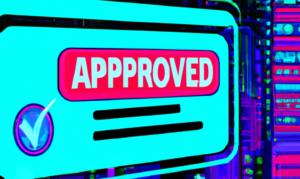A Debt Management Plan (DMP) is a strategic approach to paying off your debts in a structured and manageable way. It’s a lifeline for those feeling overwhelmed by their financial obligations. This article will guide you step-by-step on how to create an effective DMP, providing you with a clear path towards financial stability.
Understanding Debt and Debt Management
Debt comes in many forms, such as credit card debt, loans, and medical bills. Each type of debt carries its own set of terms, including interest rates and repayment schedules. Understanding these terms is the first step towards effective debt management.
Debt management involves strategically handling your debts to minimize interest and fees, and ultimately, reduce your overall debt. It’s a crucial aspect of maintaining financial stability and achieving your financial goals.
The Need for a Debt Management Plan
A DMP can be beneficial in various situations. It can help you manage multiple debts, reduce interest rates, and avoid late fees. Moreover, a well-structured DMP can provide a clear path to becoming debt-free.
A DMP is particularly beneficial if you’re struggling to meet your monthly debt payments. It can help you consolidate your debts into a single payment, making it easier to manage your finances. Plus, a DMP can potentially reduce the amount you owe each month, making your debts more affordable.
Creating a Debt Management Plan
Step 1: Assessing Your Financial Situation
The first step in creating a DMP is to list all your debts, including the amount owed, interest rate, and monthly payment. This comprehensive list will give you a clear picture of your financial situation. Next, understand your income and expenses. Calculate your monthly income and subtract your essential expenses, such as rent or mortgage, utilities, groceries, and transportation. The remaining amount is what you can realistically allocate towards debt repayment.
Step 2: Setting Realistic Goals
Setting financial goals is a crucial part of debt management. These goals should be realistic and align with your financial capabilities. For instance, if you can afford to allocate $200 towards debt repayment each month, set a goal to pay off a specific debt within a certain timeframe.
Step 3: Creating a Budget
A budget is a crucial part of a DMP. It helps you allocate your income to different expenses, ensuring you have enough to make your debt payments. To create a budget, list all your income and expenses, then allocate funds to each category. Be sure to include debt repayment as a category in your budget.
Step 4: Prioritizing Debts
Decide which debts to pay off first. You might choose to pay off debts with the highest interest rates first (avalanche method) or those with the smallest balances (snowball method). Both strategies have their pros and cons, so choose the one that best fits your financial situation and preferences.
Step 5: Negotiating with Creditors
Approach your creditors to negotiate lower interest rates or payment plans. Many creditors are willing to work with you if they see you’re making an effort to pay off your debts. Be honest about your financial situation and propose a repayment plan that you can realistically stick to.
Step 6: Implementing the Plan
Once your DMP is in place, stay disciplined and stick to it. Regularly review and adjust your plan as necessary to keep it aligned with your financial situation. Remember, the goal of a DMP is to help you become debt-free, so it’s important to stay committed to your plan.
Tips for Maintaining a Debt Management Plan
Regular reviews and adjustments are essential to maintaining your DMP. As your financial situation changes, you may need to adjust your plan accordingly. For instance, if your income increases, you may be able to allocate more towards debt repayment. On the other hand, if you encounter unexpected expenses, you may need to reduce your debt payments temporarily.
Staying disciplined is another crucial aspect of maintaining a DMP. It can be tempting to deviate from your plan, especially when you’re faced with unexpected expenses or opportunities to spend. However, remember that every payment you make brings you one step closer to being debt-free.
Potential Pitfalls and How to Avoid Them
Creating a DMP is not without challenges. Common mistakes include setting unrealistic goals, failing to stick to the budget, and neglecting to negotiate with creditors.
To avoid these pitfalls, be realistic about your financial capabilities. Don’t set goals that you can’t achieve or create a budget that you can’t stick to. Also, don’t be afraid to negotiate with your creditors. Most creditors are willing to work with you if they see that you’re making an effort to repay your debts.
The Role of a Debt Management Plan in Home Financing
Successfully implementing a Debt Management Plan (DMP) can be a game-changer when you’re ready to finance a new home purchase. Here’s why:
A well-executed DMP can improve your credit score over time. Consistent, timely payments under your plan demonstrate to creditors your ability to manage debts responsibly. This positive payment history can boost your credit score, making you a more appealing candidate to mortgage lenders.
Moreover, a DMP can help lower your debt-to-income (DTI) ratio, a crucial factor mortgage lenders consider when assessing your ability to repay a home loan. A lower DTI ratio can increase your chances of securing a favorable mortgage loan.
Additionally, a higher credit score and lower DTI ratio can help you secure better interest rates on your mortgage. Lower interest rates can lead to significant savings over the life of your home loan.
The discipline required to stick to a DMP can also prepare you for the financial commitment of a mortgage. This financial discipline can ensure you’re more likely to make your mortgage payments on time and manage your home-related expenses effectively.
Finally, successfully completing a DMP can increase lender confidence in your ability to manage a mortgage. Lenders may be more willing to approve your home loan application if they see that you’ve effectively managed your debts in the past.
In essence, a successful DMP can enhance your financial profile, making you a more attractive candidate to lenders, and potentially securing you a more favorable mortgage deal.
Conclusion
A DMP is a powerful tool for managing and paying off debts. It provides a structured approach to becoming debt-free and can help you regain control of your financial situation. By following the steps outlined in this article, you can create an effective DMP and start your journey towards financial freedom.






